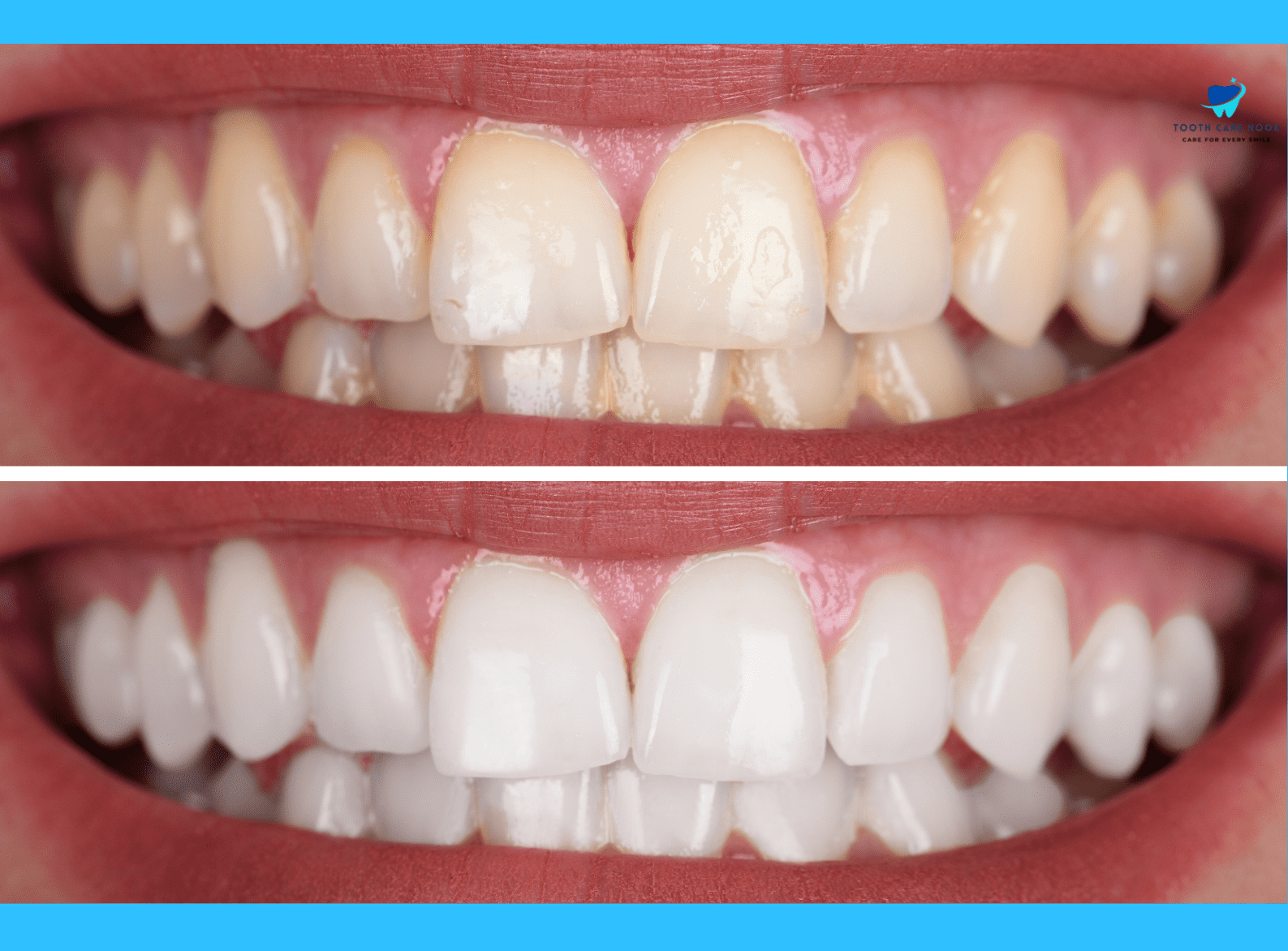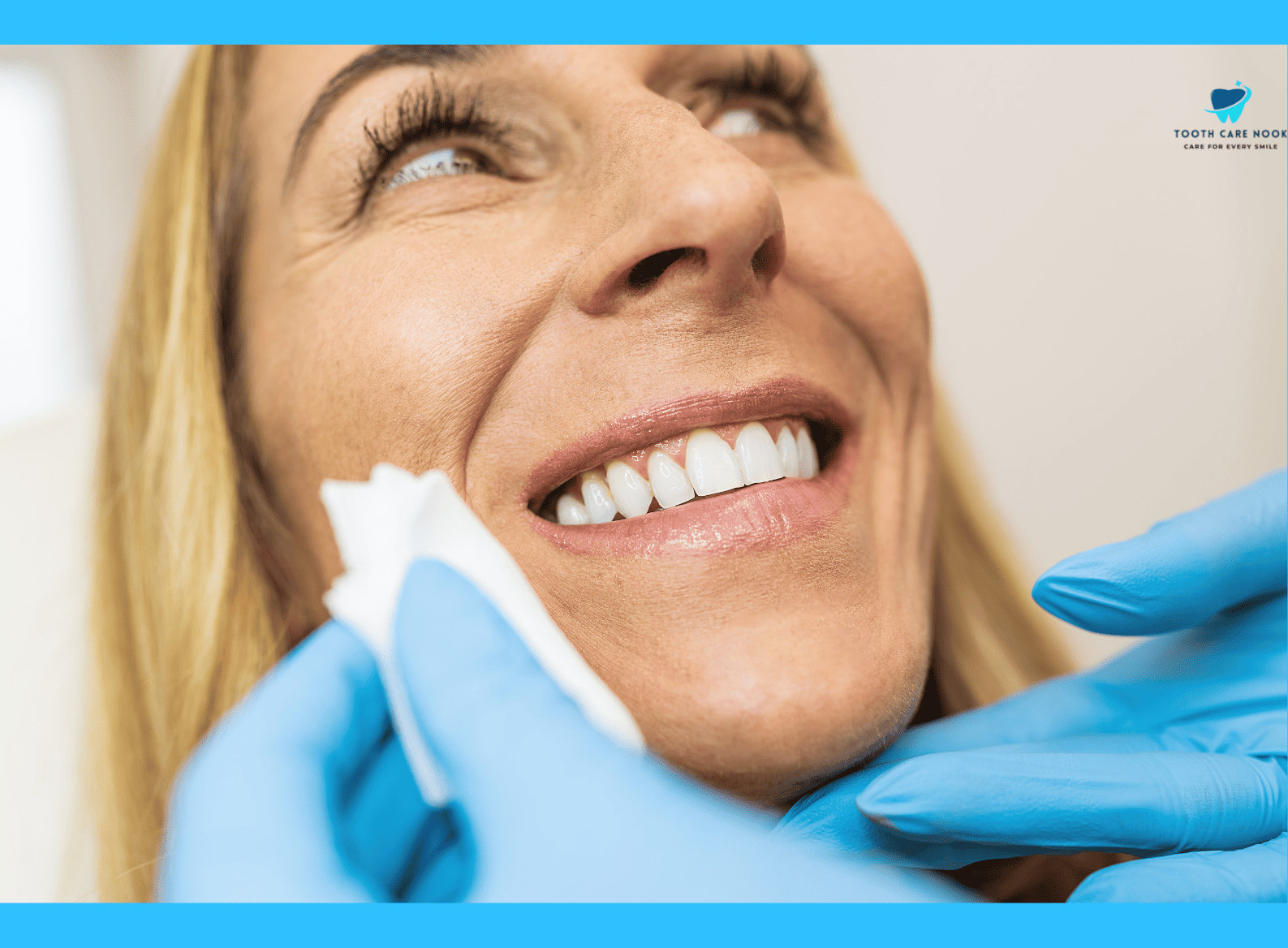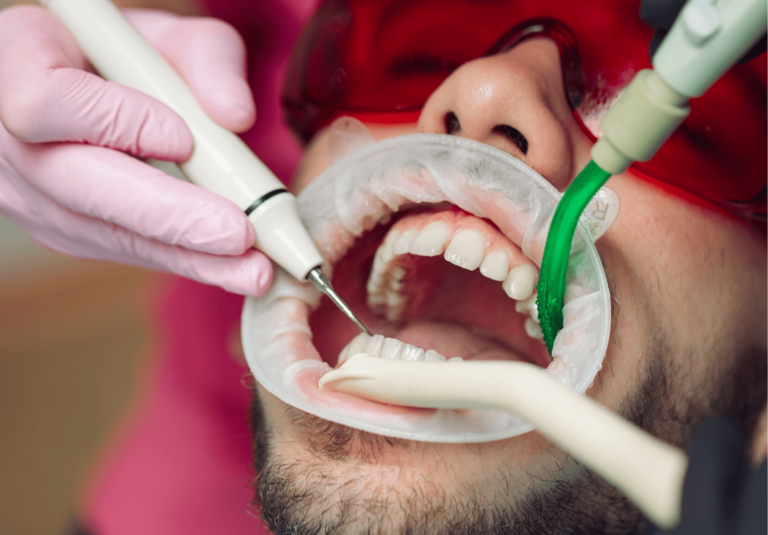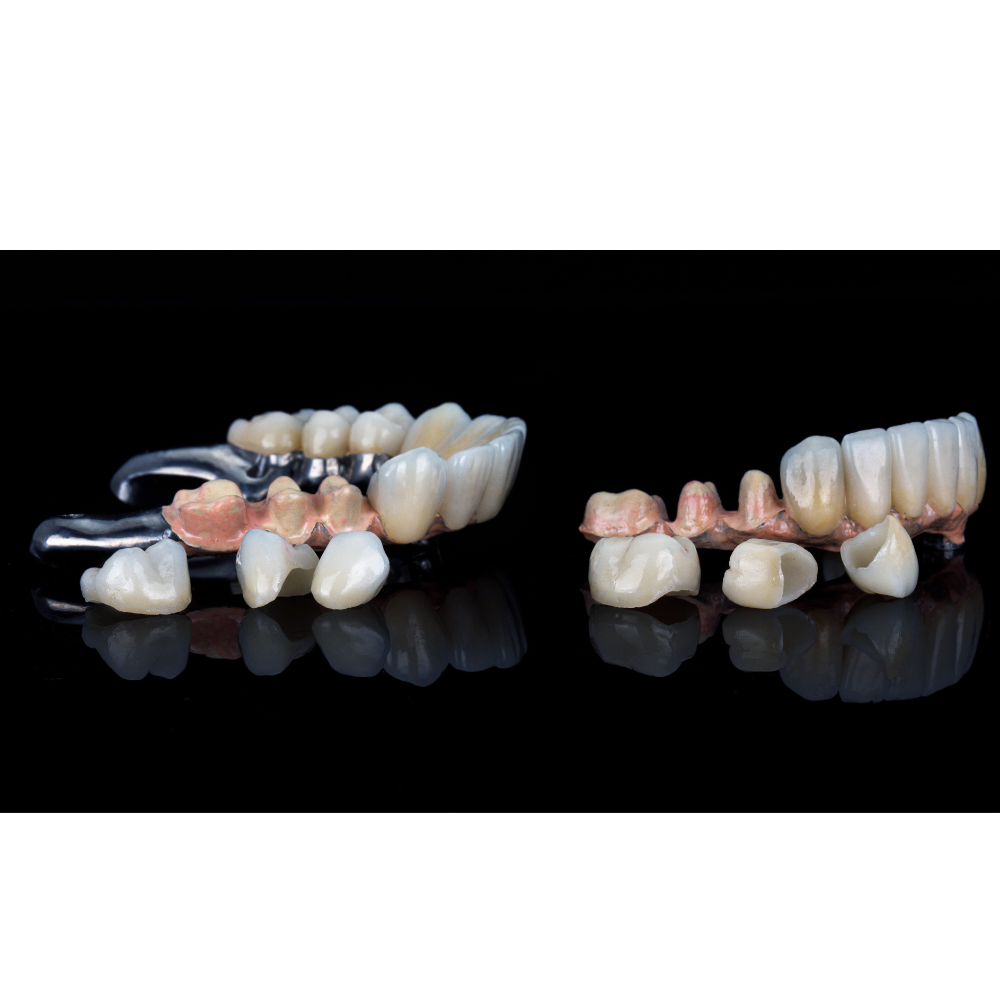What Are Disadvantages Of Deep Cleaning Teeth – Procedure And Everything Covered
Taking care of your teeth and gums involves more than just brushing and flossing. If you have gum disease, your dentist might suggest a deeper cleaning to help your gums and teeth stay healthy. This treatment is a common way to fight gum problems.
Before deciding on any dental treatment, not only pros, but you must also be aware of the disadvantages of deep cleaning teeth. Knowing both the good and bad sides of treatment can help you make the best choice for your oral health.
What Is A Deep Cleaning At The Dentist?
A deep cleaning at the dentist also known as scaling and root planing is a procedure to remove stubborn plaque and tartar buildup, especially below the gum line.
Why Would You Need a Deep Cleaning?
- Regular brushing and flossing can’t always reach everything, and plaque hardens into tartar over time. This buildup irritates the gums, leading to gingivitis.
- Deep cleaning removes this tartar and plaque, stopping gum inflammation in its tracks and preventing it from progressing to periodontitis.
- It can also be used to treat mild to moderate gum disease by removing bacteria and promoting gum healing.
Disadvantages Of Deep Cleaning Teeth
The following are some disadvantages of deep cleaning teeth:
Bleeding and Swelling:
It’s common to experience some bleeding and swelling of the gums after the procedure.
Sensitivity:
Increased tooth sensitivity, especially to hot and cold temperatures, can occur following deep cleaning.
Infection Risk:
Although rare, there is a slight risk of infection after the procedure.
Gum Recession:
In some cases, the procedure can lead to further gum recession as the gums heal and tighten around the teeth.
Cost:
Deep cleaning can be expensive, especially if multiple sessions are required or if it’s not fully covered by dental insurance.
Advantages
Prevents Gum Disease Progression:
Deep cleaning helps to remove bacteria and tartar buildup, preventing the progression of gum disease.
Reduces Inflammation:
It significantly reduces gum inflammation and bleeding, promoting healthier gums.
Prevents Tooth Loss:
By treating gum disease, deep cleaning can help prevent tooth loss associated with severe periodontal issues.
Improves Oral Health:
It contributes to overall better oral health by thoroughly cleaning areas that regular brushing and flossing can’t reach.
Eliminates Bad Breath:
Removing plaque and bacteria can help eliminate persistent bad breath caused by gum disease.
Promotes Healing:
The procedure encourages the gums to reattach to the teeth, helping to stabilize the teeth and reduce pocket depths.

Deep Cleaning Dental Procedure
Here is the whole deep cleaning dental procedure:
Before the Procedure:
Consultation Process:
Your dentist will first discuss your dental history and any concerns you have. They will then examine your mouth, checking for signs of gum disease, such as redness, swelling, or bleeding gums. X-rays might be taken to assess the health of your jawbone.
Pocket Depth Measurement:
The dentist will use a periodontal probe to measure the spaces or pockets between your teeth and gums. Deeper pockets usually exceeding 4 millimeters indicate gum disease and the need for a deep cleaning.
Treatment Plan Discussion:
Based on the evaluation, your dentist will discuss the need for a deep cleaning and explain the procedure in detail. They will also address any questions or concerns you might have.
Possible Anesthesia:
Depending on your sensitivity and the severity of gum disease, local anesthesia might be used to numb the area around your teeth during the procedure.
During the Procedure:
Scaling:
The dentist or hygienist will use ultrasonic scalers or hand instruments to remove plaque and tartar buildup from above and below the gum line. Ultrasonic scalers use vibrations and water to loosen and remove deposits.
Root Planing:
After scaling, the dentist will smooth out the rough surfaces of the tooth roots. This process, called root planing, helps prevent plaque from adhering easily in the future and promotes gum healing.
Antiseptics or Antibiotics:
In some cases, the dentist might use antiseptic solutions to rinse the pockets after cleaning. For severe gum disease, antibiotics might be prescribed to combat any remaining infection.
What to Expect After the Procedure
Recovery:
Your gums might be sore, swollen, and bleeding slightly for a few days following the procedure. Over-the-counter pain medication can help manage discomfort.
Sensitivity:
You might experience some tooth sensitivity to cold or hot temperatures. This sensitivity usually subsides within a few days.
Deep Cleaning Before And After
Here are the deep cleaning before and after images. As you can see the transformation is very clear.

Does Deep Cleaning Teeth Hurt?
Deep cleaning teeth can cause some discomfort, but the level of pain varies from person to person. Most patients experience only mild to moderate discomfort during the procedure. Dentists use local anesthesia to numb the gums and teeth, minimizing pain.
After the procedure, it is common to experience some soreness, sensitivity, and minor bleeding, but these symptoms usually subside within a few days. Over-the-counter pain relievers and following post-procedure care instructions can help manage any discomfort.
Dental Deep Cleaning Vs Regular Cleaning
| Dental Deep Cleaning | Regular Cleaning |
| Treats gum disease and removes plaque and tartar below the gumline | Removes surface plaque and tartar above the gumline for routine maintenance |
| Cleans below the gumline and smooths root surfaces | Cleans above the gumline only |
| Ultrasonic scalers and hand instruments are used for deep cleaning | Hand instruments and ultrasonic scalers for surface cleaning |
| Often requires local anesthesia to numb the area | Typically performed without anesthesia |
| Needed periodically based on gum disease severity | Recommended every 6-12 months for general maintenance |
| Post-treatment effects include Possible soreness, sensitivity, and minor bleeding | Minimal discomfort or sensitivity, if any |
| Targets deep pockets and root surfaces | Focuses on removing plaque and tartar from visible tooth surfaces |
Reasons For Gaps In Teeth After Deep Cleaning
Gaps in teeth after a deep cleaning can occur for the following reasons:
Gum Recession:
Deep cleaning can sometimes lead to gum recession, exposing more of the tooth and creating gaps between teeth.
Inflammation Reduction:
As inflammation in the gums decreases, the gums may shrink, revealing gaps that were previously hidden by swollen tissues.
Loss of Plaque Buildup:
Removal of plaque and tartar may make gaps more noticeable if these deposits previously crowded the teeth.
Natural Healing Process:
As the gums heal and reattach, they may temporarily appear to recede, creating the impression of gaps.
Existing Gum Disease:
Advanced periodontal disease can lead to loss of supporting gum and bone structure, making gaps more evident after treatment.

Is A Dental Deep Cleaning Ever Really Necessary?
Yes, a dental deep cleaning is often necessary in specific situations. It becomes essential when a patient has been diagnosed with periodontal disease, particularly in its moderate to advanced stages. Here’s why it might be necessary:
Periodontal Disease:
Deep cleaning is required to manage and treat gum disease, which involves the buildup of plaque and tartar below the gum line that can’t be removed with regular brushing and flossing.
Preventing Tooth Loss:
It helps prevent further gum recession and bone loss, which can lead to tooth mobility or loss if not addressed.
Improving Gum Health:
It reduces inflammation and infection, promoting healthier gums and preventing disease progression.
Eliminating Deep Pockets:
It cleans out deep pockets between the teeth and gums, where bacteria can thrive and cause further damage.
FAQs
Why My Gums Hurt Weeks After Deep Cleaning?
Gum pain weeks after deep cleaning can occur due to the natural healing process, as the gums adjust and reattach. Persistent pain might also be due to inflammation, sensitivity, or infection.
Is Gum Infection After Deep Cleaning Normal?
Gum infection is not common but can occur after deep cleaning if bacteria were introduced during the procedure or if post-treatment care was inadequate. It’s important to follow post-procedure care instructions and contact your dentist if you notice signs of infection.
Does Deep Cleaning Help Bad Breath?
Yes, deep cleaning can help reduce bad breath by removing plaque and tartar that contribute to odor. It also addresses underlying gum disease, which is a common cause of persistent bad breath.
Does Deep Cleaning Damage Gums?
Deep cleaning is generally safe and effective when performed by a qualified professional. However, it can cause temporary discomfort, sensitivity, or minor gum recession.



